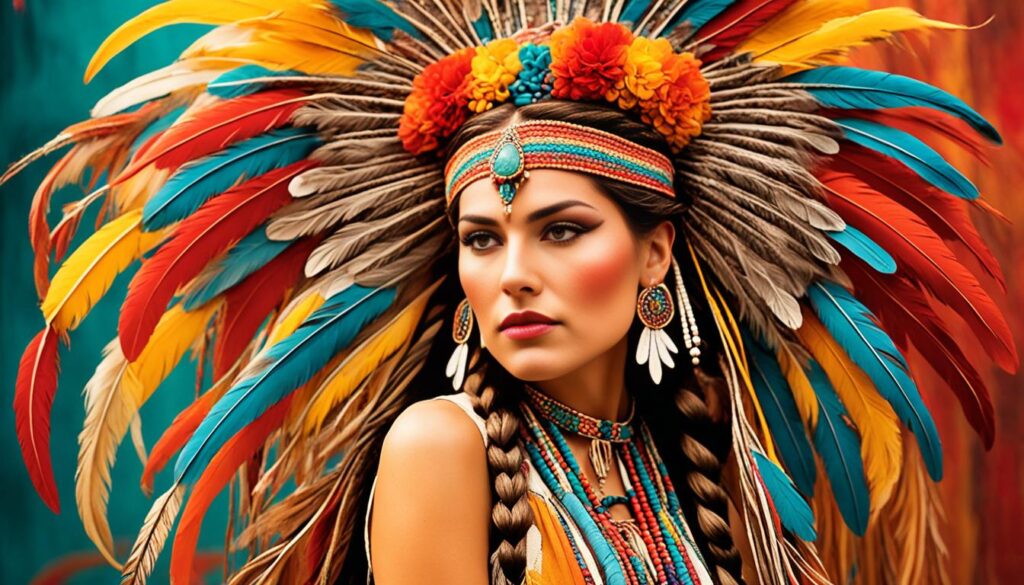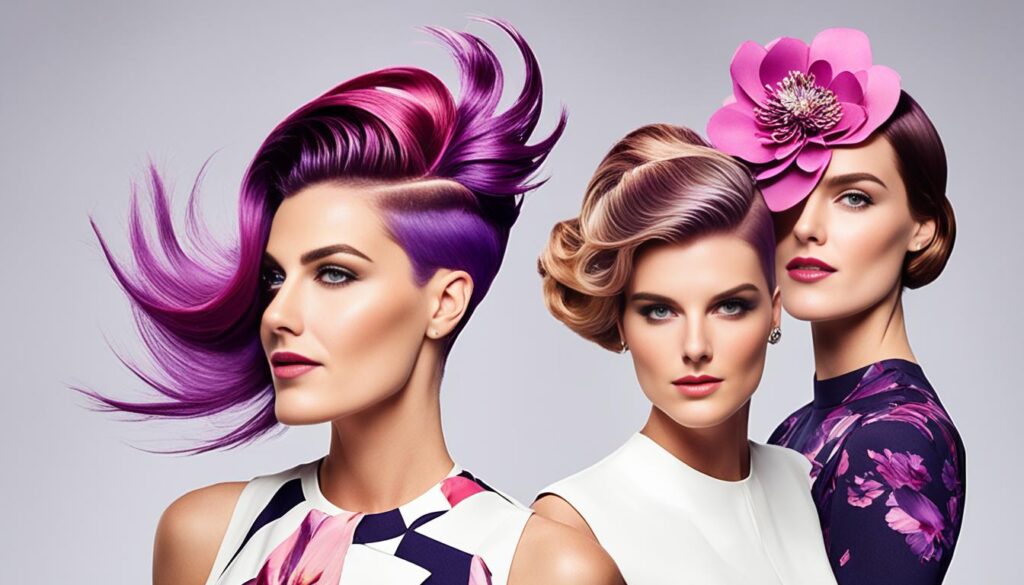
When it comes to Mexican hair traditions, one question often arises: Did native Mexicans braid their hair? While braids are now a popular hairstyle around the world, their history and cultural significance might surprise you. Delve into the rich traditions of Mexican hair braiding and discover the fascinating practices that have been passed down through generations.
From ancient tribes to modern-day Mexico, hair braids have played a central role in indigenous Mexican culture. Exploring the historical context of braided hairstyles, we will uncover their importance in personal expression, cultural identity, and spiritual beliefs. Join us on this journey to unveil the secrets and stories woven into the hair of native Mexicans.
Key Takeaways:
- Traditional Mexican hair braiding practices have a long history and are deeply rooted in Mexican culture.
- Braided hairstyles in ancient Mexico held both practical and symbolic significance.
- Mexican braids are not limited to women; men also embrace braided hairstyles as part of their cultural heritage.
- Mexican braided hairstyles have evolved and adapted to modern trends while still honoring traditional techniques.
- By exploring Mexican hair braiding traditions, we gain a deeper understanding of cultural identity and the importance of preserving heritage.
Traditional Mexican Braided Hairstyles
Traditional Mexican braided hairstyles have been passed down through generations and continue to be an integral part of Mexican women’s cultural heritage. These hairstyles showcase the artistry, tradition, and diversity of Mexican hair braiding practices. Let’s explore some of the most popular braided hairstyles in Mexico:
Single Braid
The single braid is a timeless and elegant hairstyle. It involves braiding the hair into a long, single plait that gracefully falls down the back. This style exudes simplicity and sophistication, making it a favorite among Mexican women.
Double Braids
Double braids, also known as the “boxer braids,” are a stylish and trendy choice. The hair is divided into two sections, and each section is braided on either side of the head. Double braids offer a versatile look that works well for both casual and formal occasions.
Chingons
Chingons, or buns, are a popular choice for Mexican women. This versatile hairstyle can be created on loose or braided hair. The hair is gathered and twisted into a bun, either at the base of the neck or on top of the head. Chingons are effortlessly chic and provide a convenient way to keep hair off the face and neck in Mexico’s hot climate.
Crown Braids
One of the most iconic Mexican braided hairstyles is the crown braid, famously worn by the renowned artist Frida Kahlo. The crown braid starts with a middle part and involves braiding the hair on each side. The braids are then wrapped around the head to create a halo-like effect. This regal hairstyle combines elegance with cultural symbolism.
These traditional Mexican braided hairstyles reflect the rich cultural heritage of Mexico and have been cherished and appreciated for centuries.
| Hairstyle | Description |
|---|---|
| Single Braid | Classic and simple; a long, single plait down the back |
| Double Braids | Divided into two sections and braided on each side of the head |
| Chingons | Gathered and twisted into a bun at the base of the neck or on top of the head |
| Crown Braids | Braided on each side and wrapped around the head to create a halo-like effect |
Did Ancient Mexicans Wear Braids?
Ancient Mexicans, including the Mayans and Aztecs, embraced braided hairstyles that held cultural and symbolic significance. These intricate styles represented a person’s status, tribe, and occupation, showcasing the rich diversity of ancient Mexican culture. In particular, the Mayans had a long history of adorning their hair with beautiful braids. Upper-class women would intricately weave their hair into braids, often adding ornaments and ribbons for special occasions.
These braided hairstyles were not only a way to create stunning looks, but they also held spiritual significance among ancient Mexican tribes. Hair was believed to be closely connected to a person’s spiritual life energy, and certain braided hairstyles carried symbolic meaning. For example, the scalp lock, a style characterized by a long lock of hair left uncut at the back of the head, was considered to represent a warrior’s strength and connection to the divine.
“Ancient Mexican braided hairstyles were a visual representation of our identity and beliefs. They allowed us to express our connection to our tribe, our spirituality, and our place in society.”
Braided hairstyles played a vital role in the cultural expressions of ancient Mexicans, embodying a sense of pride and tradition. Today, these hairstyles continue to be celebrated and honored as part of Mexico’s rich heritage.
To get a glimpse of the beauty of ancient Mexican braided hairstyles, take a look at the image below:

| Ancient Mexican Braided Hairstyles | Description |
|---|---|
| Double Braids | Two braids framing the face, often embellished with ribbons or beads. |
| Crown Braids | Braids encircling the head, reminiscent of a crown, worn by both men and women. |
| Scalp Lock | A long lock of hair left uncut at the back of the head, representing a warrior’s strength and connection to the divine. |
| Ornamental Braids | Braids adorned with colorful ribbons, feathers, and beads for special occasions and celebrations. |
Mexican Hairstyles Today
While traditional braided styles remain prevalent in Mexican culture, modern Mexicans have embraced a range of hairstyles that exhibit their diversity and individuality. Mexican hairstyles today go beyond the traditional braids, offering options for those who prefer a shorter, more edgy look.
Some women have chosen to break away from tradition and opt for short cuts as a statement against gender norms. Short cuts provide them with a sense of empowerment and freedom to express their personal style. Whether it’s a pixie cut, a bob, or a shaggy hairstyle, short hair is becoming increasingly popular among Mexican women.
Another trend seen in Mexican hairstyles today is the use of colored strands. While Mexicans are traditionally known for their dark hair, many women are experimenting with vibrant colors to add uniqueness and individuality to their look. From bold reds to pastel hues, colored strands are a way for Mexican women to express their creativity and showcase their personality.
Furthermore, with the relatively comfortable and modern lifestyle, more women are opting for loose and straight hair. This casual and relaxed look has gained popularity as it is easy to maintain and offers a versatile style option for different occasions.
Mexican hairstyles today challenge the notion of one-size-fits-all beauty standards and celebrate the diversity within the Mexican community. By embracing short cuts, colored strands, and loose and straight hair, Mexican women are redefining beauty and embracing their individuality with confidence.

The Beauty of Mexican Individuality
“Mexican hairstyles today challenge the notion of one-size-fits-all beauty standards and celebrate the diversity within the Mexican community.”
The hairstyles of modern Mexicans reflect their evolving cultural identity and commemorate their rich cultural heritage. It is a testament to their resilience and the ability to embrace change while staying connected to tradition. The diverse range of Mexican hairstyles showcases the individuality and beauty of Mexican women, illustrating that there is no one definition of Mexican beauty.
Conclusion
Mexican braids are more than just a hairstyle; they are a cultural heritage deeply rooted in Mexican identity. From the ancient tribes to the present day, braids have been an integral part of Mexican traditions, symbolizing tradition, practicality, and artistry. While traditional braided styles continue to hold significance, Mexican women now have the freedom to explore various hairstyles and express their individuality.
Mexican braids hold a special place in the hearts of Mexican people, representing the harmonious blend of style and tradition. By embracing and celebrating Mexican braids, individuals not only honor the rich history of Mexican hair braiding traditions but also contribute to the preservation of their cultural heritage. Mexican braids are a testament to the resilience and beauty of Mexican culture, showcasing the unique and diverse styles that have evolved over time.
Whether it’s a single braid, double braids, chignons, or crown braids, Mexican braids carry a sense of pride and connection to the past. As Mexico continues to embrace its cultural heritage, the art of Mexican braiding remains a vital part of the country’s identity, serving as a reminder of the style and tradition that define Mexican beauty.






